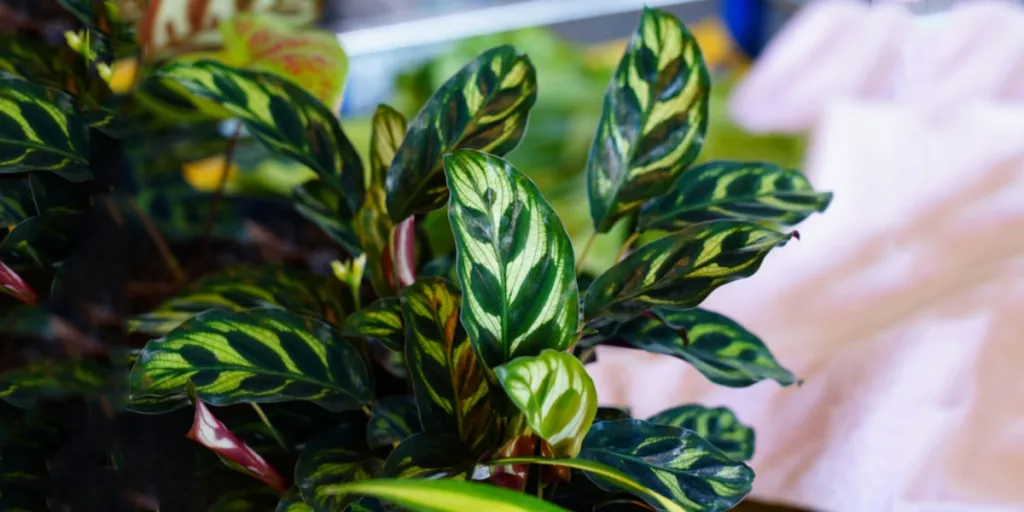Calatheas are familiar sights in homes across the world. One of the most popular houseplants of the Marantaceae prayer plant family is the zebra plant. Others include exotic peacock plants and the unique foliage of the rattlesnake plant species. Moreover, the new Calathea hybrid (similar to the White Fusion) is now becoming a favorite.
With so many Calathea varieties, it is easy to integrate these plants into your interior decor plan. Here, we share decor tips for these pet-friendly plants. We also share Calathea care guidelines and solutions for enjoying these plants in cold climates or for those who aren’t gardeners.
Table of Contents
What are prayer plants?
Incorporating Calatheas into home décor
Calathea plant care
Not a gardener, but want a gorgeous Calathea?
What are prayer plants?
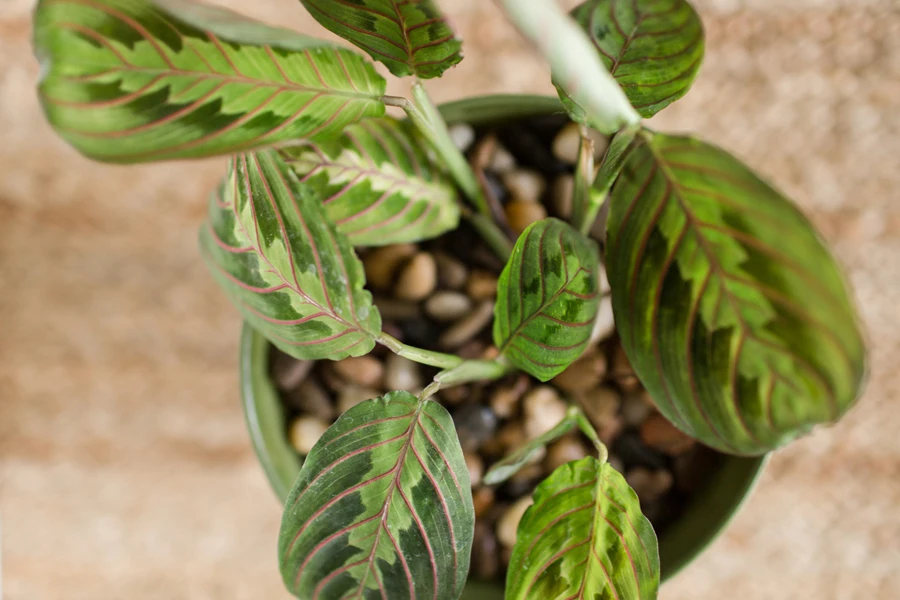
There are over 43 varieties of Calathea plants, some of which belong to the Goeppertia plant genus, yet both are part of the Marantaceae family. Some of the Marantaceae species are known as prayer plants. The nickname comes from the unique daily leaf movement of these fantastic floor plants that look like folded hands as they curl inwards at night.
This reaction comes from living in the low light environment of tropical American forests. As the leaves curl, they help absorb maximum light and water and retain moisture. Similarly, this activity helps prevent bacteria and fungi from forming on the leaves.
Incorporating Calatheas into home décor
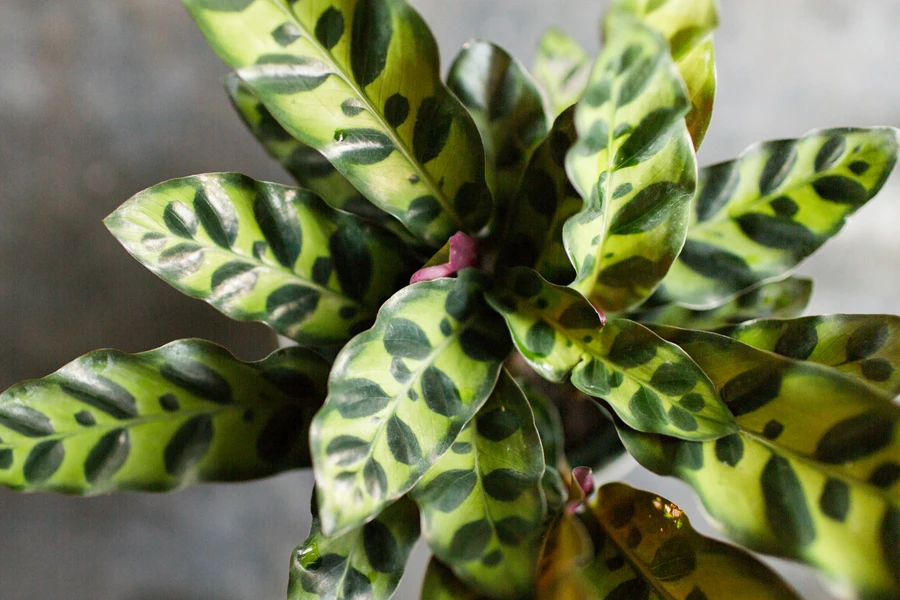
Plant lovers include these beautiful tropical indoor plants in their interior and outdoor décor. Besides some varieties having a lovely shade of burgundy purple leaves, others boast unique wavy green and white patterns. It is this striking foliage that attracts people to these plants, so add a living work of art to your decor for a new dynamic.
An irresistible focal point
No matter what Calathea you buy, it commands attention, whether in the bathroom or sitting room. With irresistibly striking silver brush marks and other colorful patterns on their leaves, it is impossible not to admire this beautiful houseplant and its ideal accent in any interior design plan.
Light contrasts
Combine a collection of these tropical beauties in a corner of the biggest room in the home and wait for the play of natural light to create its magic. As the light changes, so do the leaves, creating a constant new perspective on these beautiful plants.
Contemporary furnishings
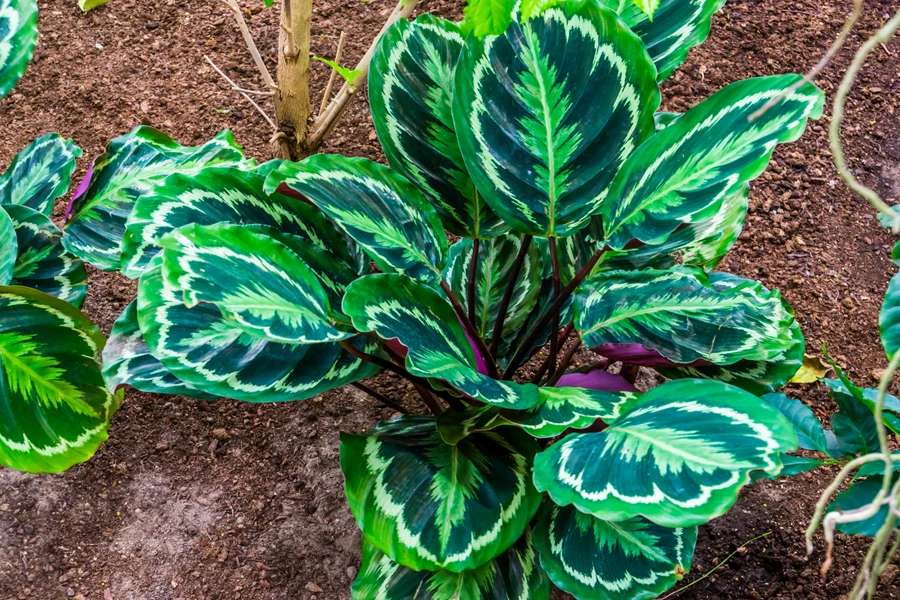
Complement or contrast modern tabletops with the ancient beauty of these tropical house plants. The combination is surprising and delightful, inspiring you to play around with as many options as possible.
Themed corners
Grouping themed planters with Calatheas and accessories is an excellent choice of décor that stands out in any room. Place these groupings on the floor or tabletops for maximum aesthetic impact, drawing visual and verbal expressions of appreciation from all who see them. While admiring your artistic talents, preserve their beauty with attentive care.
Beautify outdoor areas
These topical plants do well indoors and outdoors. As a result, you can adorn balconies, patios, and front doors with the Calathea’s fancy foliage. Use a mix of varieties to showcase different Calathea types, highlighting a range of these tropical forest floor plants in one area.
Intersperse dark green leaves, stripes, and wavy ones for a stunning show because there are lots of varieties of Calathea to mix and match. Alternatively, planting them with other tropical species like the Red Aglaonema and Exotic Angel offers additional contrasts.
Calathea plant care
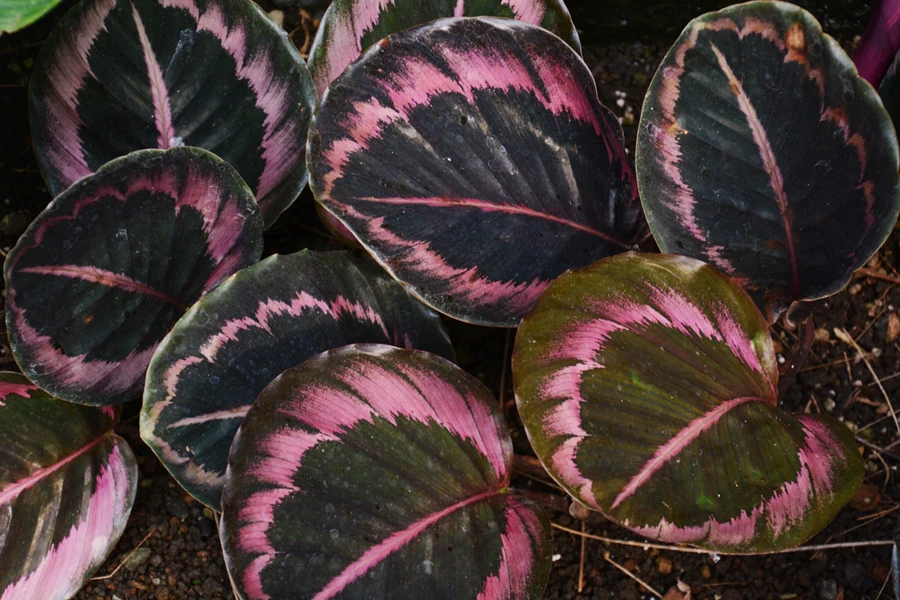
Soil
A vital part of Calathea plant care is moist soil. However, well-draining soil is the ideal growing medium for Calatheas to keep the roots healthy. A mixture of peat, perlite, and potting soil is best to mimic the natural habitat of most Calatheas but always check growth instructions.
Water
A beginner gardener may find the care of their Calathea prayer plants challenging. But their care may not be as difficult as you imagine. For example, zebra plants want regular watering in the morning. How much you give them depends on the season, location, and the soil depth.
The climate and humidity are also issues when finding out how to care for members of the Calathea genus. Still, most need water once a week in the growing season and less in winter. You’ll know if your prayer plants need water if the top inch of soil is drying out.
Light
Calatheas are tropical plants that grow under larger ones in the tropical forests of Belize and Bolivia in South America. Because of this, they do not adapt well to direct light, which can burn their leaves. Instead, place them in a spot with indirect light for protection. A location near a window can provide ideal light conditions to keep them healthy. You can also surround your zebra plant with other Calatheas for even better light conditions.
Humidity
Besides keeping your plant away from direct sunlight, temperature, and high humidity are other issues to consider. They do well in a 50% to 60% humidity range, but a pebble tray or humidifier helps generate moisture without creating excess water. Even with a pebble tray, you must mist the leaves a few times during the week.
Temperature
Prayer plants thrive in warm temperatures, so the ideal indoor temperature range is between 65 and 75 degrees Fahrenheit (18 to 24 °C). Unless you use special heating lights, do not attempt to grow them if you live where temperatures drop below 50 °F (10 °C).
Fertilizer
Calatheas need little fertilizer or compost. Too much fertilizer, the wrong spotting mix, or even the incorrect water can lead to mineral build up and excessive nutrients that cause a soil imbalance. This is why distilled water is vital to moisten the soil rather than tap water. Alternatively, use rain water to wet the soil in the pot of your Calathea plant.
Common problems
Common problems occur when Calatheas don’t receive a good balance of water and humidity. Adjust the humidity or water if you notice brown leaf tips or curling leaf edges.
If the stems feel soft or mushy, this is probably also due to overwatering. You can overcome these common issues by adjusting the water and humidity with a humidifier or a pebble tray.
Check the underside if you notice yellow or white spots on your Calathea plant leaves. Spider mites may be sucking all the juices out of your plant. Fortunately, you can treat this problem by spraying the leaves with neem oil.
Not a gardener, but want a gorgeous Calathea?
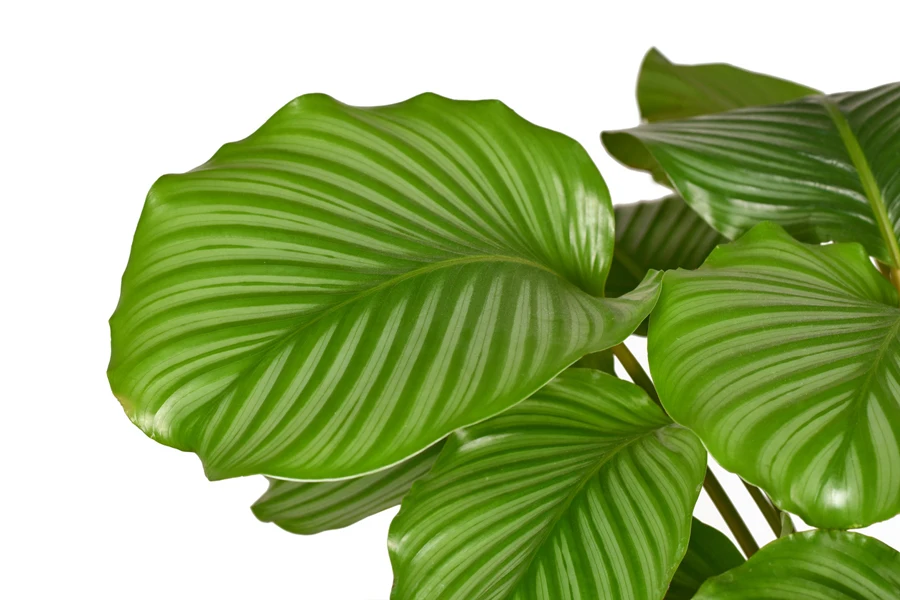
If you don’t have the confidence to care for Calatheas, there is a solution. Or, if you live in the colder states of the U.S. or another country where chilly weather prevents you from growing Calatheas, you have options.
Discover the versatile range of artificial Calathea plants at Alibaba.com. Pair your orders with flower pots and low plant stands, and you will have an excellent way to display the wild Marantaceae without much effort.
